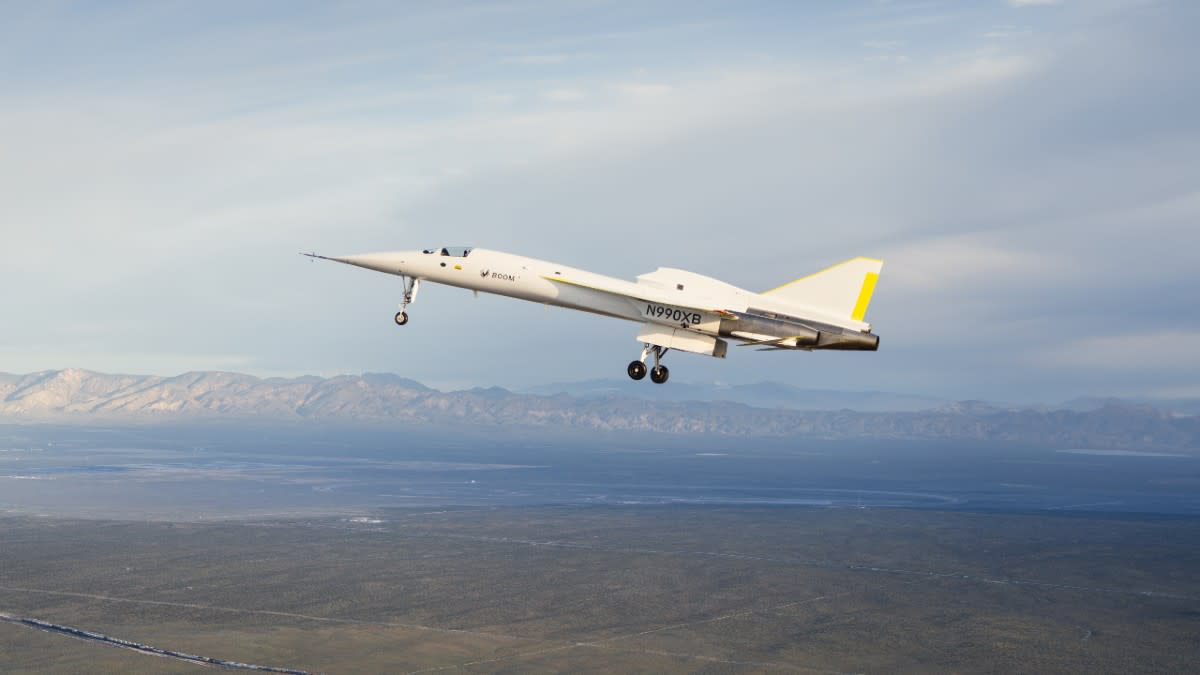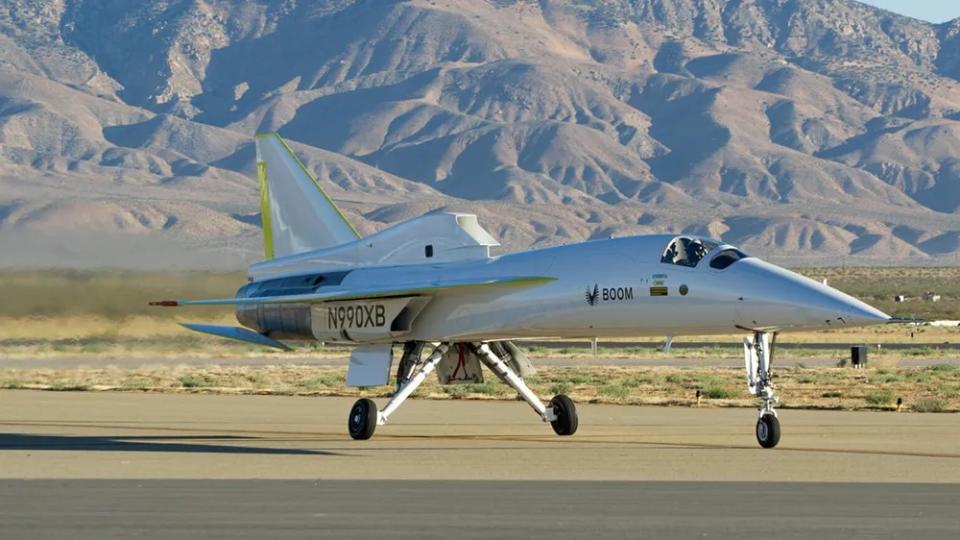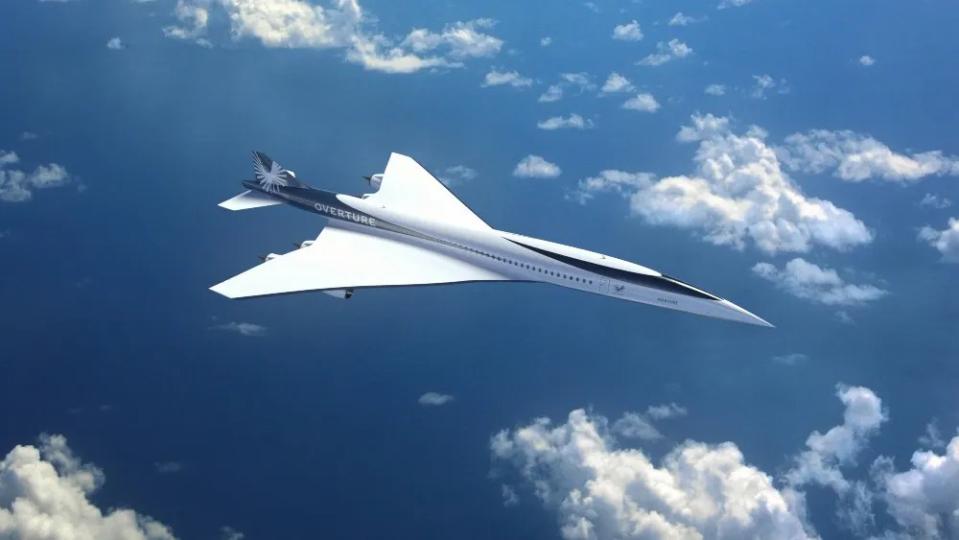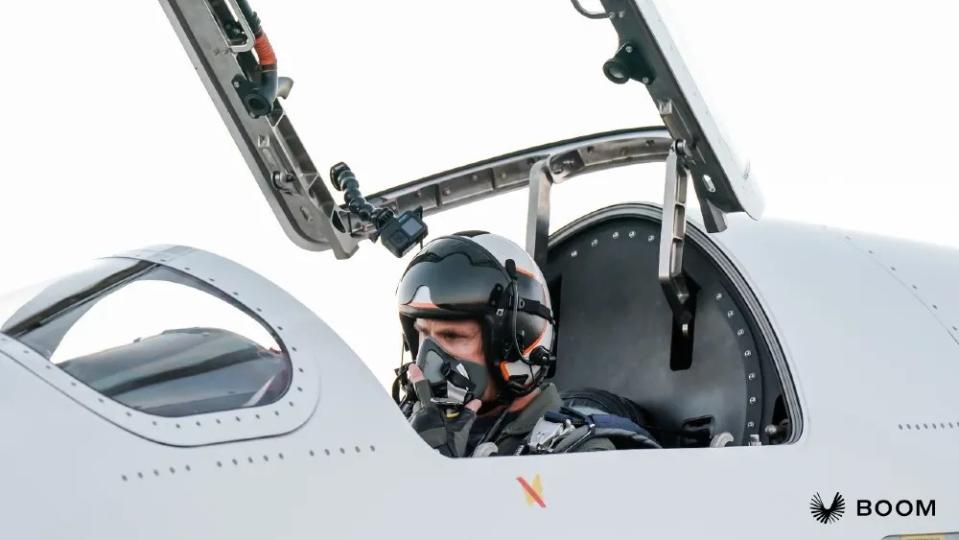Boom’s Supersonic Jet Just Hit the Skies for the First Time

Boom Aviation’s XB-1 took a giant step forward in its mission to become the third civilian-built supersonic jet today when it completed a roughly 12-minute sub-sonic test flight in the skies around California’s Mohave Desert, the same locale where Chuck Yeager first broke the sound barrier in 1947.
“This marks the most significant milestone yet on our path to bring supersonic travel to passengers worldwide,” Blake Scholl, Boom’s CEO, said afterwards. The 63-foot long, single-seat XB-1 took off at 7:28 Pacific time, ascended to 7,120 feet, and hit a top speed of 238 knots while executing a series of maneuvers to test its handling and flight-control systems before returning to the Mojave Air & Space Port. “Get excited, because this is technology we’ll all benefit from,” Scholl told Robb Report earlier in the week.
More from Robb Report
This Bonkers Supersonic Jet Concept Could Fly at up to 1,141 MPH-With 200 Passengers
NASA Wants to Make a Supersonic Jet That's Twice as Fast as the Concorde

While the initial stats may not warrant a Champagne-popping celebration by outsiders, this first flight is the first milestone in a series of test flights that will move into the aircraft’s supersonic potential. It was also privately funded.
The XB-1’s initial hop follows 10 years of effort and millions in spending. Those investments led to a carbon-fiber body that utilizes a modified delta wing arrangement manufactured to meet a computer-driven design at tolerances “within the width of a few human hairs,” according to Scholl.
The fuselage includes a set of intakes that convert the incoming air flow to sub-atomic speeds, allowing the craft to run on the 12,300 pounds of thrust provided by three GE J85 engines. As with the Concord, XB-1 pilots can’t see over the elongated nose, a problem Boom solved by including a pair of cameras that deliver an augmented reality view of the exterior.

“Supersonic aviation is back, and it’s back to stay,” Scholl told Robb Report. The first part of that statement is now a little closer to the truth, but the second remains theoretical. Boom estimates the XB-1 will execute another 10 to 20 sub-sonic test flights before attempting to break the sound barrier, hopefully some time in 2024.
Once all the testing is complete, the next phase can begin. Boom developed the XB-1 as a demonstrator model to prove out technologies needed for a planned 64-to 80-seat commercial jet called Overture, which has already received pre-orders from United, American, and Japan Air. The conversion is not as simple as stretching the XB-1, and significant hurdles remain.

The company will have to successfully convert the design and performance characteristics to a much larger, heavier craft and develop its own engines, while solving the noise problem (initially, the Overture will fly at sub-sonic speeds over land) while meeting funding and regulatory demands.
Presented with such difficulties and surrounded by skeptics, Scholl continues to exude understandable optimism, envisioning the first passenger-carrying Overtures in the air by “the end of the decade.”
“We know it works,” he says. “Now we just have to execute.”
Best of Robb Report
Sign up for Robb Report's Newsletter. For the latest news, follow us on Facebook, Twitter, and Instagram.

